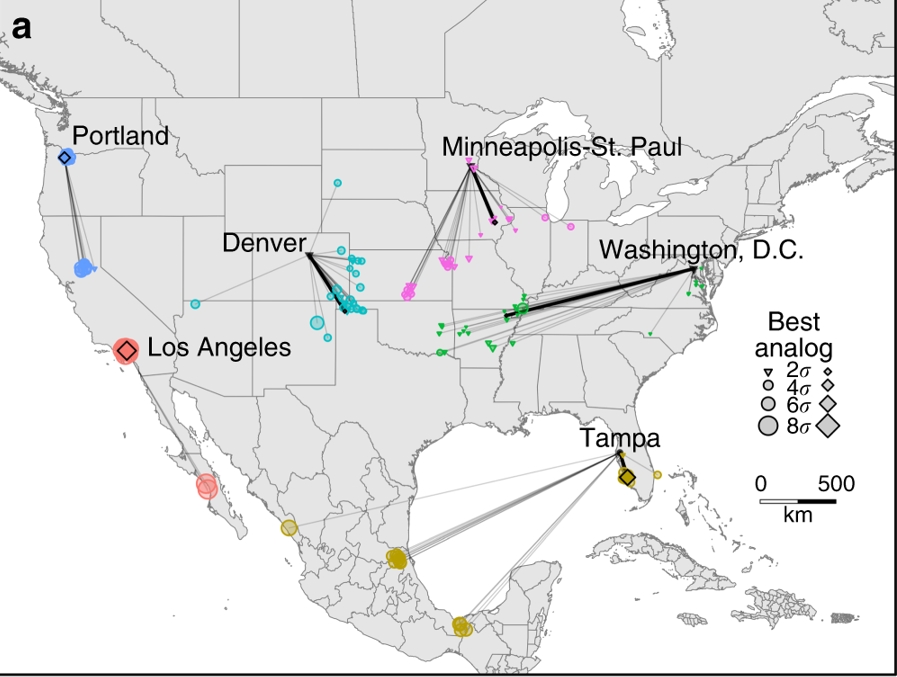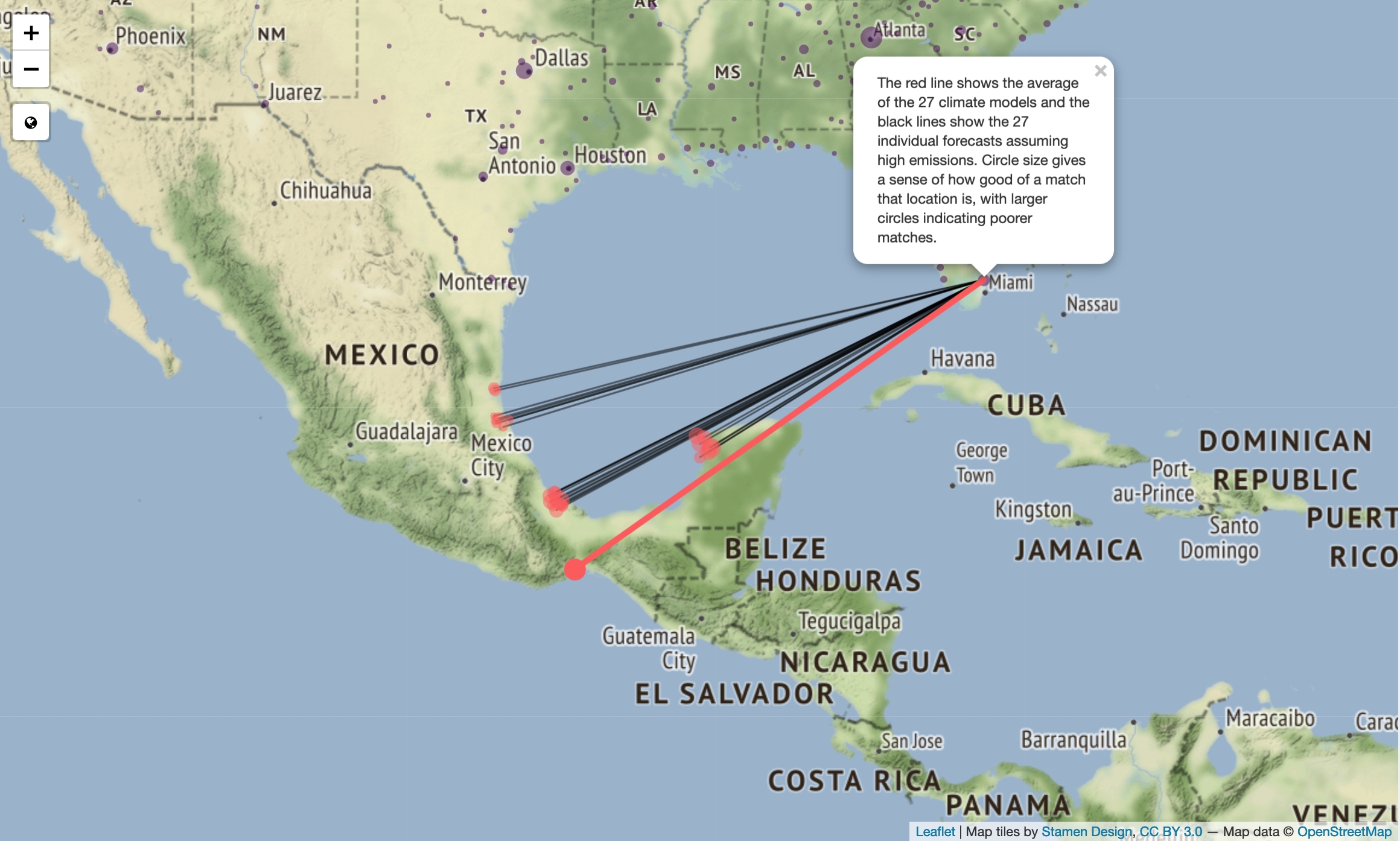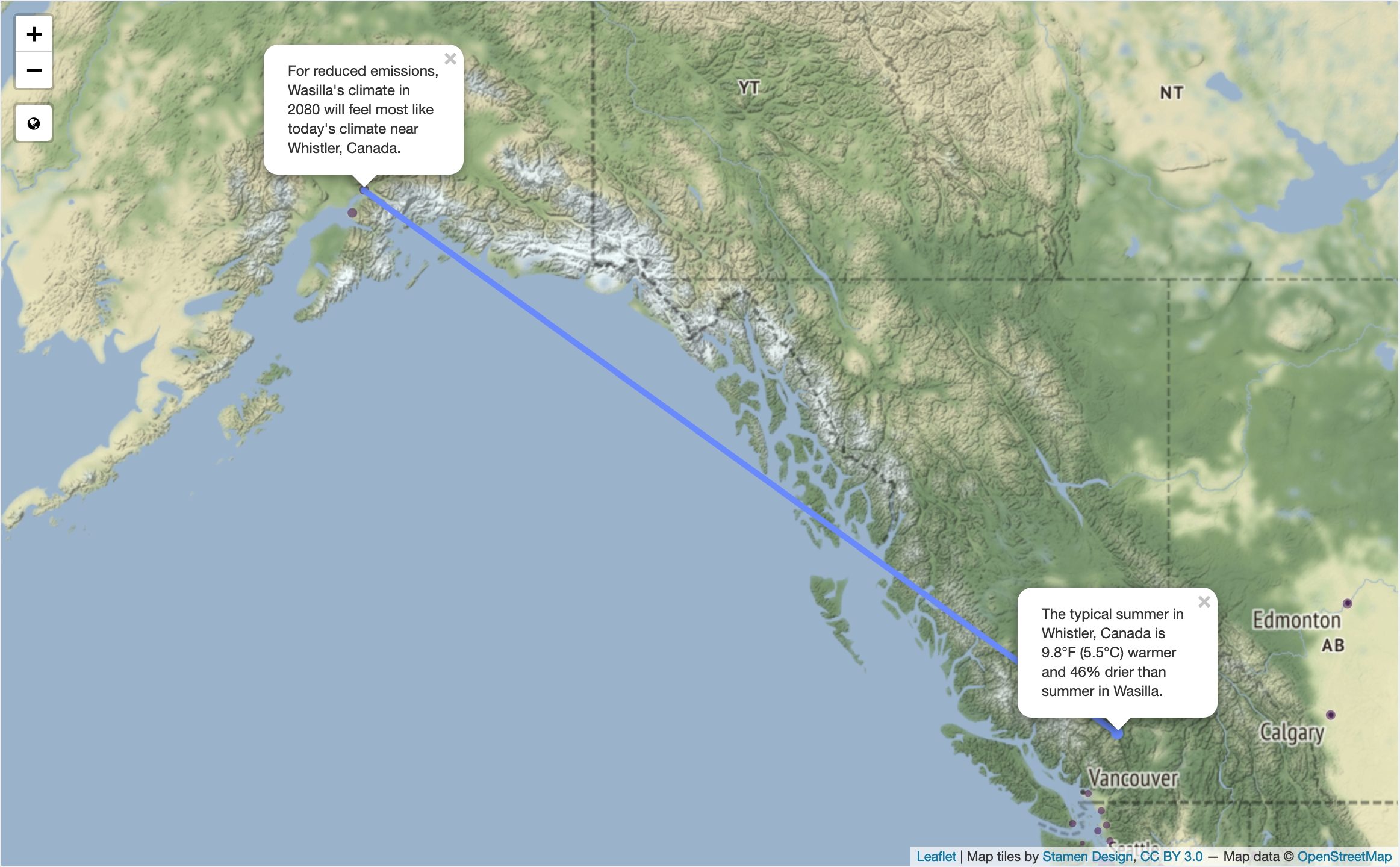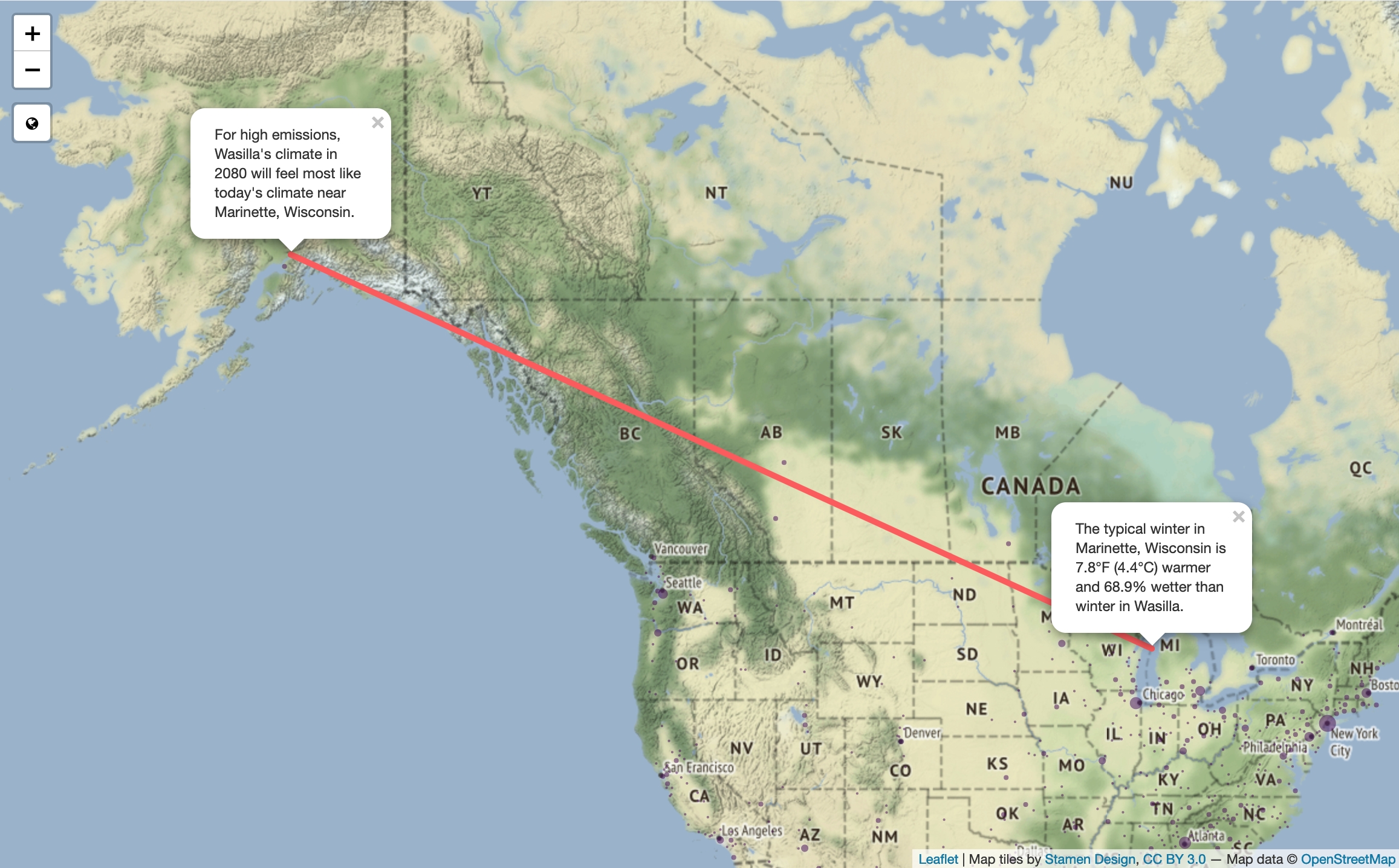
Climate change can be hard to fully fathom, especially because those in power continually seem to downplay alarming reports by scientists and our country’s own institutions. In an effort to help make the conversation more personal by offering real-world climate analogies, researchers Matthew C. Fitzpatrick and Robert R. Dunn decided to create an interactive map to help illustrate how the climate will change across 540 urban areas in North America by 2080.
Using something called climate-analog mapping, Fitzpatrick and Dunn’s goal was to develop a tool that would allow the general public, as well as farmers, educators, decision-makers, and city planners to explore how the climate will change. Fitzpatrick and Dunn are hopeful this will help facilitate broader conversation amongst the public.

In a study accompanying the release of the map app, Fitzpatrick and Dunn write, “It is difficult for individuals to detect and conceptualize gradual changes in climate, particularly where natural variability is high and when expected changes in climate are couched solely in numbers.” The pair’s research into climatic analog analyses was able to offer “not so much new models of the future but rather a means to communicate existing models such that their predictions are less abstract and psychologically distant and more local, experiential, and personal.”
That sounds super complicated. The point is, they wanted it to feel easy for dummies like us to savvy out. To do that, the pair of researchers looked at 12 different variables for 540 U.S. and Canadian cities under two different climate change scenarios, which consisted of the four climatological seasons temperature and total precipitation maximum and minimums. The two scenarios show how the climate will be impacted if the current U.S. emissions continue as they are, as well as the less extreme results we’d experience under the emissions guidelines set by the Paris Climate agreement that we just bailed out on, and the difference couldn’t be more shocking.
Under the Paris Climate Agreement, we’d still see general warming of our climate across the country, but in way less extreme measures as the climate of most cities shifting southward about 300 miles. Results under current emissions see cities shifting over 500 miles southward on average, with Fitzpatrick and Dunn warning “Many cities could experience climates with no modern equivalent in North America.” Yikes!


The study knowingly ignores additional factors like sea-level rise, the urban heat island effect, and other extreme situations. So if you’re thrilled that suddenly your city is adopting the always perfect climate of Los Angeles, keep in mind that such a drastic change in climate will cause can be downright catastrophic, as you may be living somewhere that won’t exist anymore. Floridians how do you sleep at night?!
According to the study, urban areas are highly vulnerable to climate change because of aging infrastructure and barriers to climate adaptation efforts, but that doesn’t even take into account the way it’ll change our entire agricultural infrastructure.
Check out the interactive map here to see how your favorite cities across The U.S. and Canada will change in 60 years time. We picked some of our favorite cities if you’re feeling lazy, check out them out below!
New York City: The typical summer in New York City will feel like Jonesboro, Arkansas where summers are 9 degrees warmer and 20% drier than what New York currently experiences.
Los Angeles: LA will feel almost like Las Palmas, Mexico, where temperatures are 6 degrees warmer and 2032% wetter than an average Los Angeles summer. Angelenos will NOT be able to hang with that rain.
Chicago: Chicago may lose some of its trademark chill, with winters more akin to Lansing, Kansas, where it’s 7 degrees warmer and 31% drier than the windy city.
Austin: Austin will heat up by eight degrees and become 61% drier in the winter time as its climate starts to resemble Nuevo Laredo, Mexico.
Miami: Miami’s climate will resemble San Blas Atempa, Mexico with a temperature increase of 3 degrees and a slight decrease in summer moisture. Which won’t matter when the city is underwater.
New Orleans: Summer in New Orleans will be 16% wetter as the city experiences a climate more akin to western Florida’s Westchase.
Las Vegas: Winters will get 9 degrees hotter and 5% drier in the city of sin as Las Vegas adopts the climate of Bullhead City, Arizona.
Atlanta: Atlanta winters will heat up by almost 10 degrees, with the warmer and wetter climate of Saraland, Alabama.
San Francisco: San Francisco is famous for being foggier and colder than other big cities in California, but they can expect to adopt the climate of Palos Verdes, Southern California where it is 7 degrees warmer and 40% drier in wintertime.
Toronto: Toronto Canada, say hello to the summer climate of Secaucus, New Jersey! Experience an increase of Five degrees and 35% wetter than the average Toronto summer. Sounds so very un-Canada.
